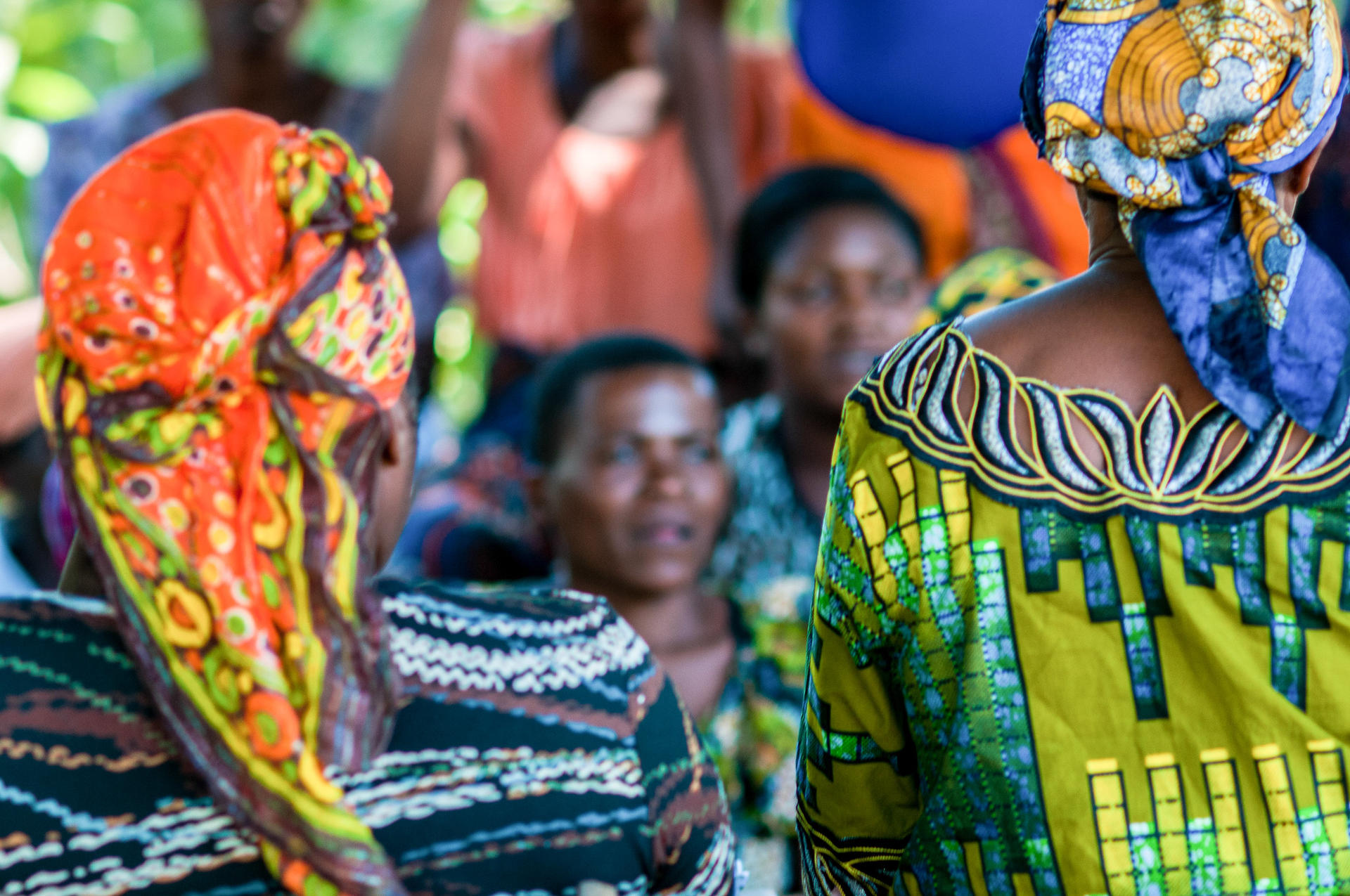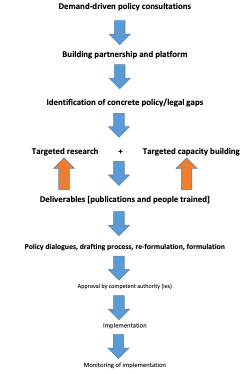Blog Ask the Gender Clinic: How to integrate gender meaningfully in policy development and implementation?

Alliance gender experts discuss challenges of integrating gender into policy with policy specialist Ronnie Vernooy, and offer up 10 top tips for making policy gendered.
The Alliance of Bioversity International and CIAT is trialing, in the context of strengthening our collective gender research capacity, a ‘gender clinic'. The format is simple: any researcher struggling with a gender issue in their research can bring their problem to the clinic and the available gender researchers will give their ‘diagnosis’ and suggest possible ‘treatments’. We don’t claim to cure the problem, but we can improve it!
In this clinic, Ronnie Vernooy, Senior Scientist in the Policy Group of Biodiversity for Food and Agriculture, asked about how to integrate gender meaningfully in policy development and implementation in the context of seed and genetic resources policy:
“In our plant genetic resources and seed policy work, it has been a challenge to systematically engender both the policy analysis (what is right/wrong with current policies) and policy implementation (does it work or not? why?) work we have been doing. When I look back at the last 10 years of work, there is too little of sound engendered analysis and effective engendered implementation.”
Ronnie explained the process of the Policy Unit research (Figure): “Starting from demand-driven policy consultations, the researchers and national partners build platforms and partnerships in which they discuss and identify policy and legal gaps. These gaps lead to further research, and/or targeted capacity strengthening to fill the gaps, the results of which are used as inputs for the policy process. Key elements of this process are policy dialogues (where proposed revisions and reforms are presented and debated) and the drafting of new or reformulated policies, for review and approval by the relevant national authority (e.g. a line minister, a parliamentary committee or the national parliament). Once the policies are approved, our influence decreases (represented by the non-bolded stages in the Figure), and implementation and monitoring are usually independent of us.”

The gender researchers gave their advice, summarized as 10 tips below.
10 tips for integrating gender into policy-oriented research
1. When forming working groups, include a working group specifically on gender. Eileen Nchanji gave the example of the policy work in the Pan-Africa Bean Research Alliance (PABRA). At country-level, when multistakeholder working groups are formed to tackle important issues, a group is set up to focus explicitly on factors affecting women and youth. In addition, gender experts are joining country policy working groups on different themes.
2. At every stage in the policy process, ask 'Where is gender?'. Make it deliberate. For example, in the first phase, of demand-driven policy consultations, What if you were to include, for example, the Minister for Family Affairs or for Women?
3. Sometimes you need to 'prime' demand. There is not always a 'demand' for gender work or more equitable outcomes when the focus is on another topics, like seeds. Stakeholders may not feel a demand, or even see a link to their interests. Thus, there is a need to make the case, and link to the outcomes these stakeholders are interested in, finding synergies and exploring where gender outcomes may have multiplier effects on other outcomes that this group is interested in. Perhaps develop a theory of change showing how attention to gender leads to other changes.
4. Focus not only on the formulation phase, but also on the action needed to close the gap between policy and implementation. Fanny Howland gave the example of Alliance research in Honduras and Guatemala, where they have found that policies are often designed in a participatory way, but they have learned that insufficient attention is sometimes given to the action phase. This may be because of the context - gender is sometimes motivated by external international development organizations, or is the purview of a small gender team at country level with little influence.
5. Focus on gatekeepers. Find opportunities to create demand or increase understanding among people whose will, interest and demand are critical. Figuring out who these 'gatekeepers' are and investing in those relationships and their capacities can be a game changer.
6. Consider both participation and process of partnerships and platforms. First ask: Who is around the table? Then consider not only who is there, but also the process. How much does it open up space for rarely-heard voices to table issues and to feel comfortable to use their voice?
7. Identify knowledge brokers. Find people who can speak both ‘languages’, that is, people who are conversant in gender and technical issues, such as seed systems, in this case. They can be champions on the technical side for gender issues.
8. Include gender in capacity building activities and evidence generation, so that there is evidence of how and where gender is important for example for achieving seed system goals and capacity to do it.
9. Consider the whole package. How does the whole package contribute to gender equality once it gets to implementation? Although an achievement in itself, getting gender written into policies is not enough. It's how the whole package of delivery of services and the whole policy environment contribute to gender equality. Many complementary pieces are needed for norms to start to change.
10. Create demand from the bottom up. In Eileen Nchanji's research experience 'informal policies' can be successful in creating traction, modelling success that others then want to replicate. This can end up later being supported by and enshrined in policies. This is similar to the work on community seedbanks, which has been a successful example of bottom-up policymaking, as mentioned by Ronnie Vernooy.
And one extra!
11. Work intentionally and document it. We need evidence of what works and examples of success from which others can learn. All of us need to work intentionally with respect to integrating gender in policy work, document the process, share successes, and make people visible.
Read more
- Discursive translations of gender mainstreaming norms_The case of agricultural and climate change policies in Uganda
- Enhancing social inclusion through local dialogues on natural resource management
- Examining the Barriers to Gender Integration in Agriculture, Climate Change, Food Security, and Nutrition Policies_Guatemalan and Honduran Perspectives
- Gender integration in agriculture, food Security and climate change policy_a framework proposal
- Gender responsive policy formulation and budgeting in Tanzania_do plans and budgets match
- Getting it right, a guide to improve inclusion in multistakeholder forums
- Paso a paso para la inclusión de género en iniciativas de Agricultura Sostenible Adaptada al Clima para Honduras
- The power of narratives_Explaining inaction on gender mainstreaming in Uganda’s climate change policy
More from CGIAR Gender
Join the CGIAR Gender conference "Cultivating Equality: Advancing Gender Research in Agriculture and Food Systems" this week, from 12-15 October.
